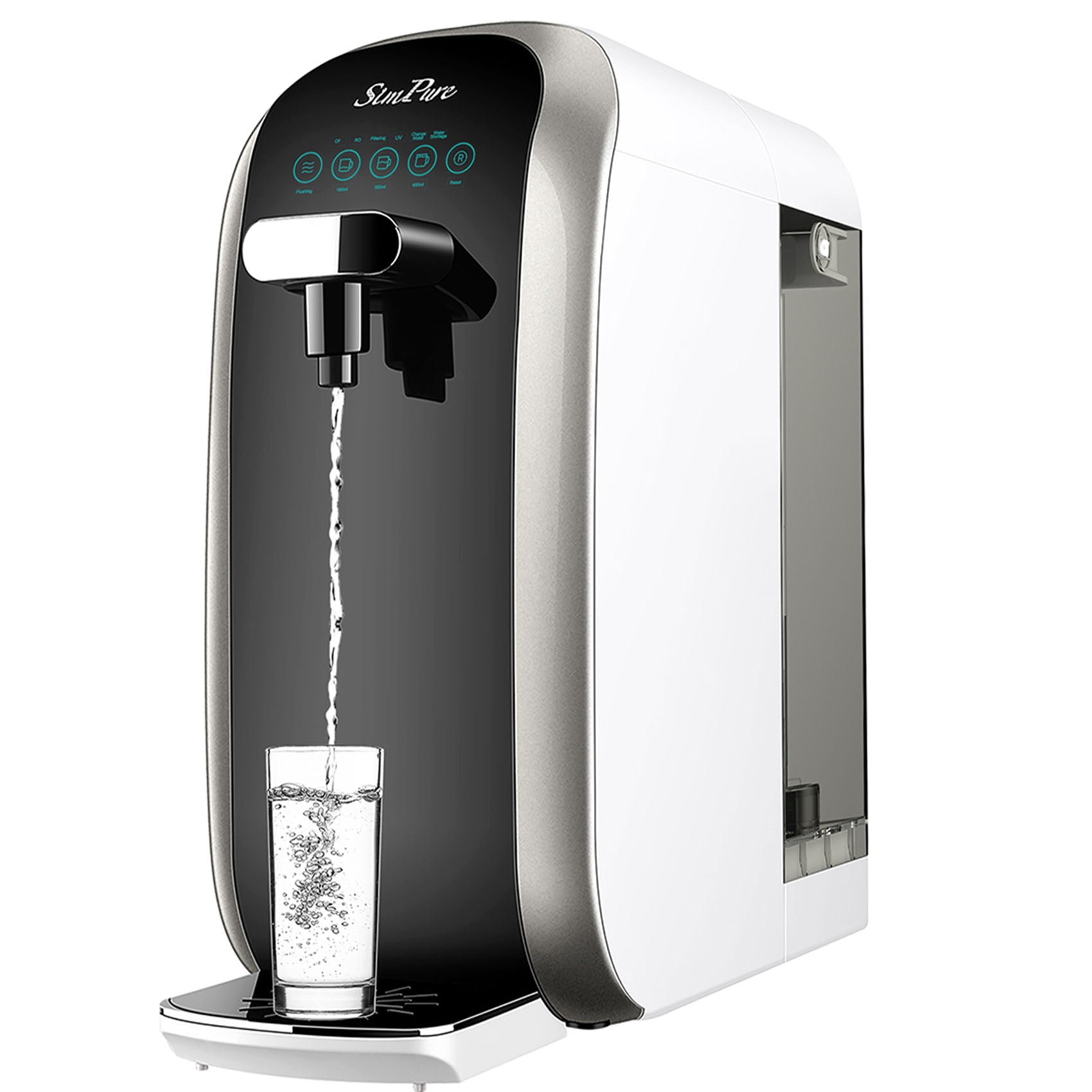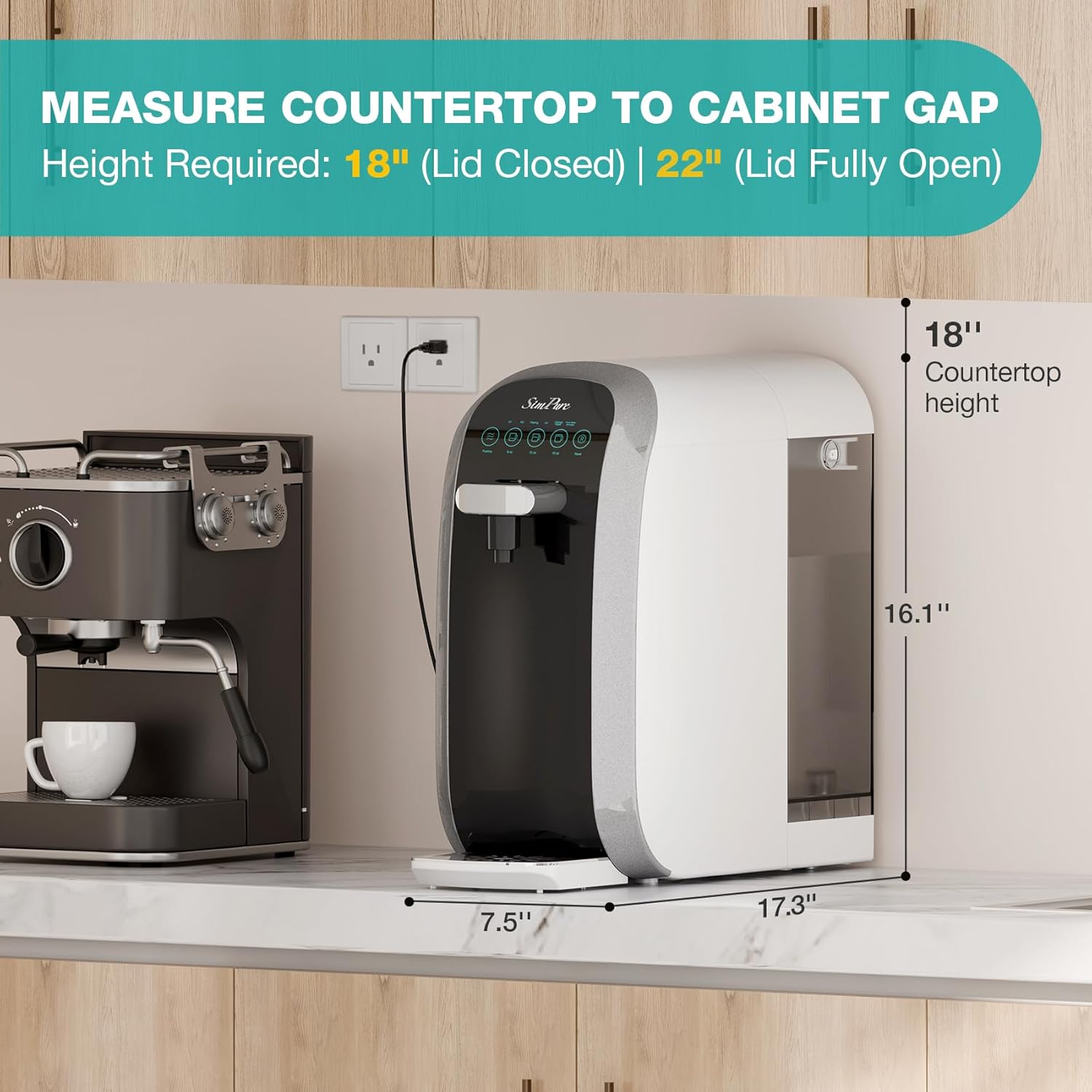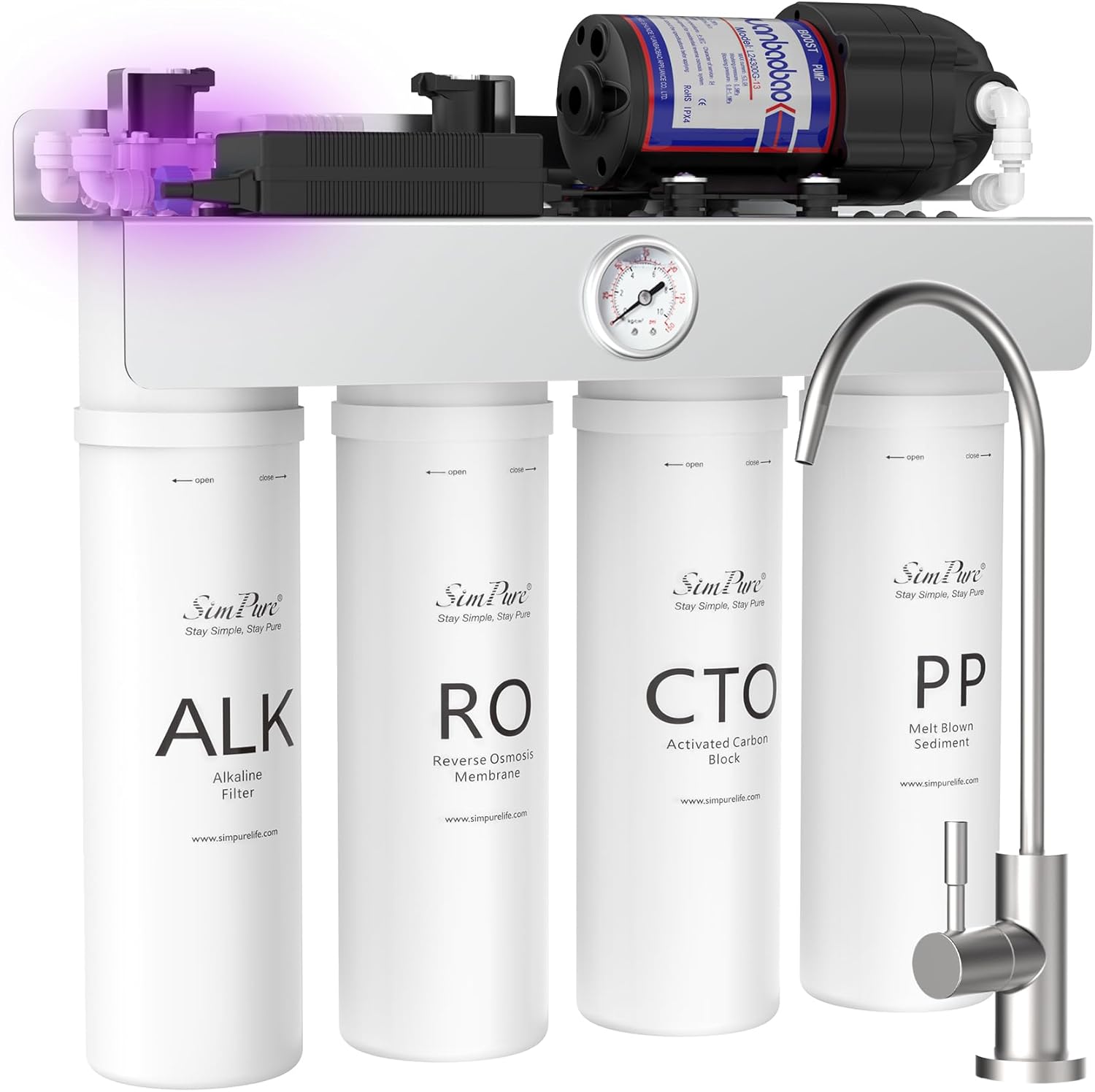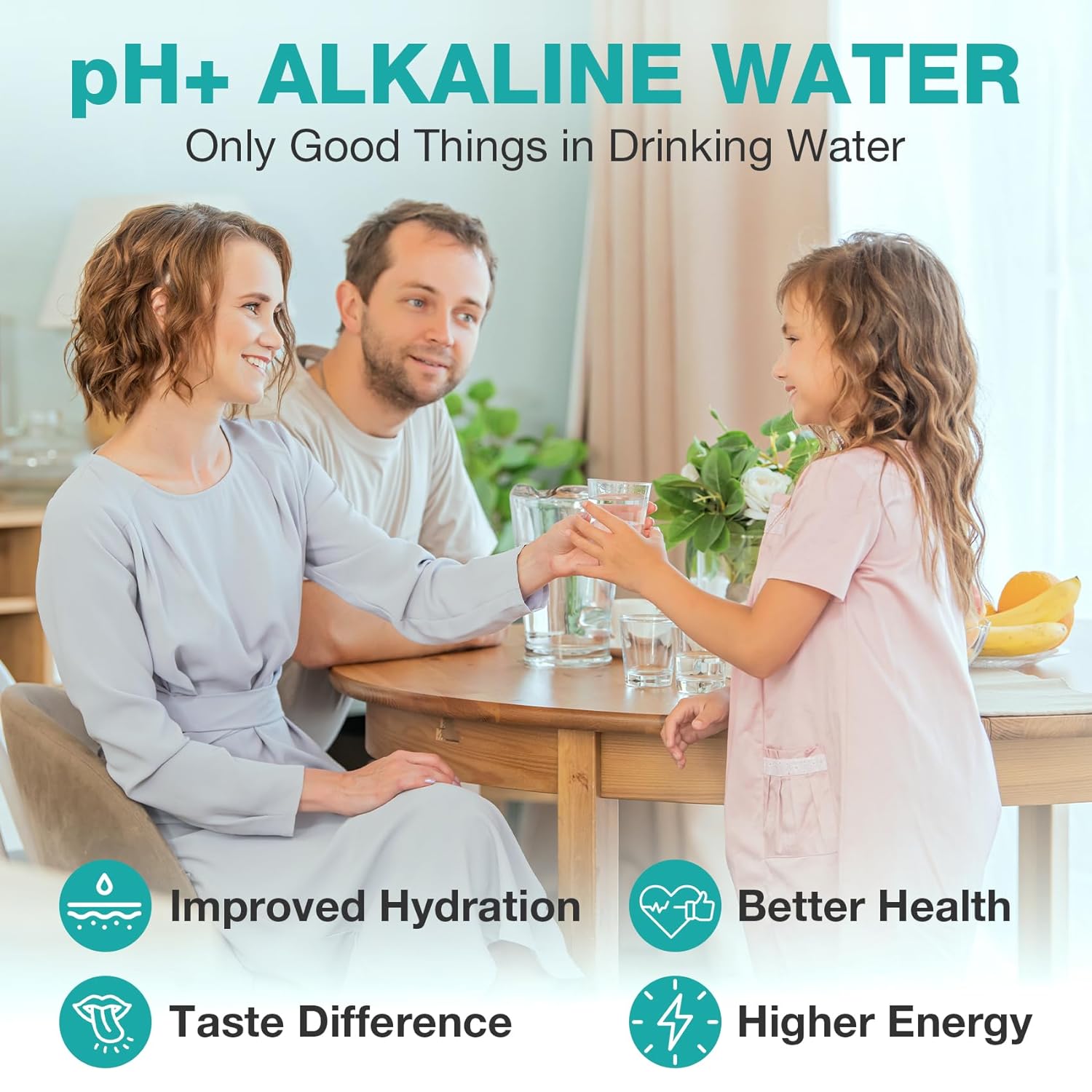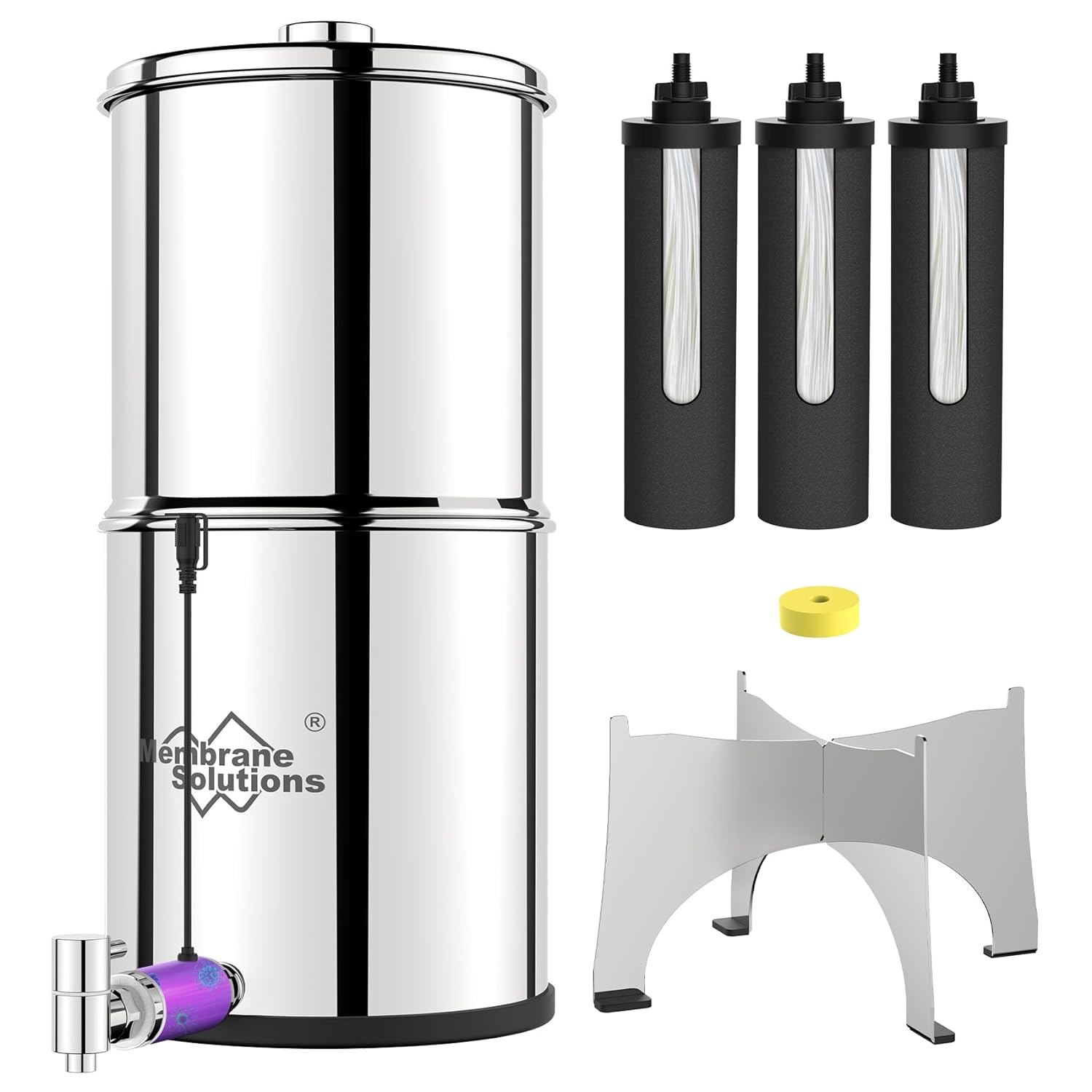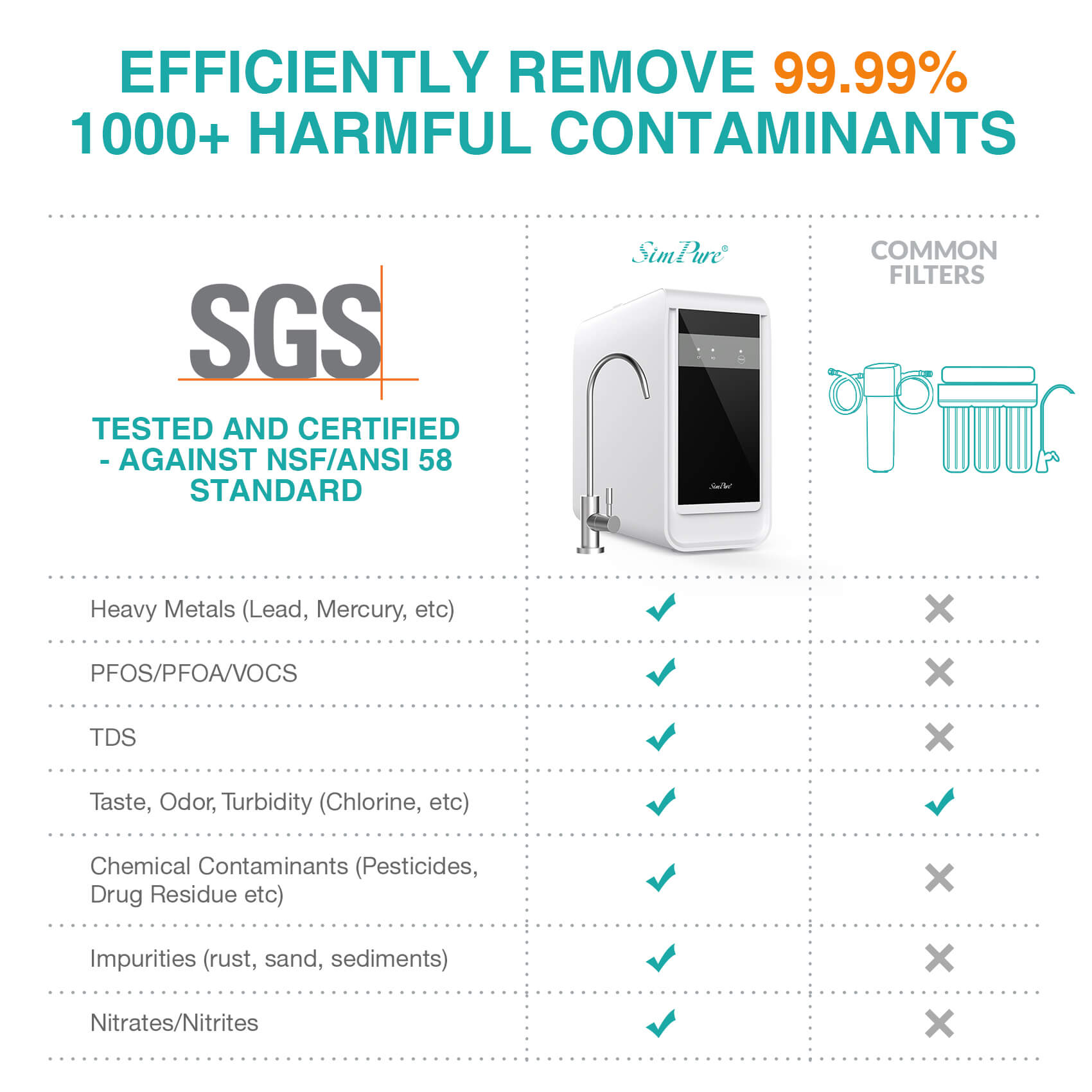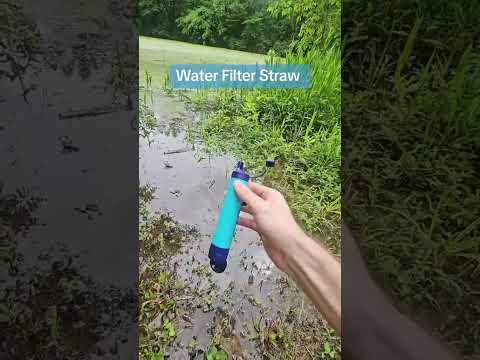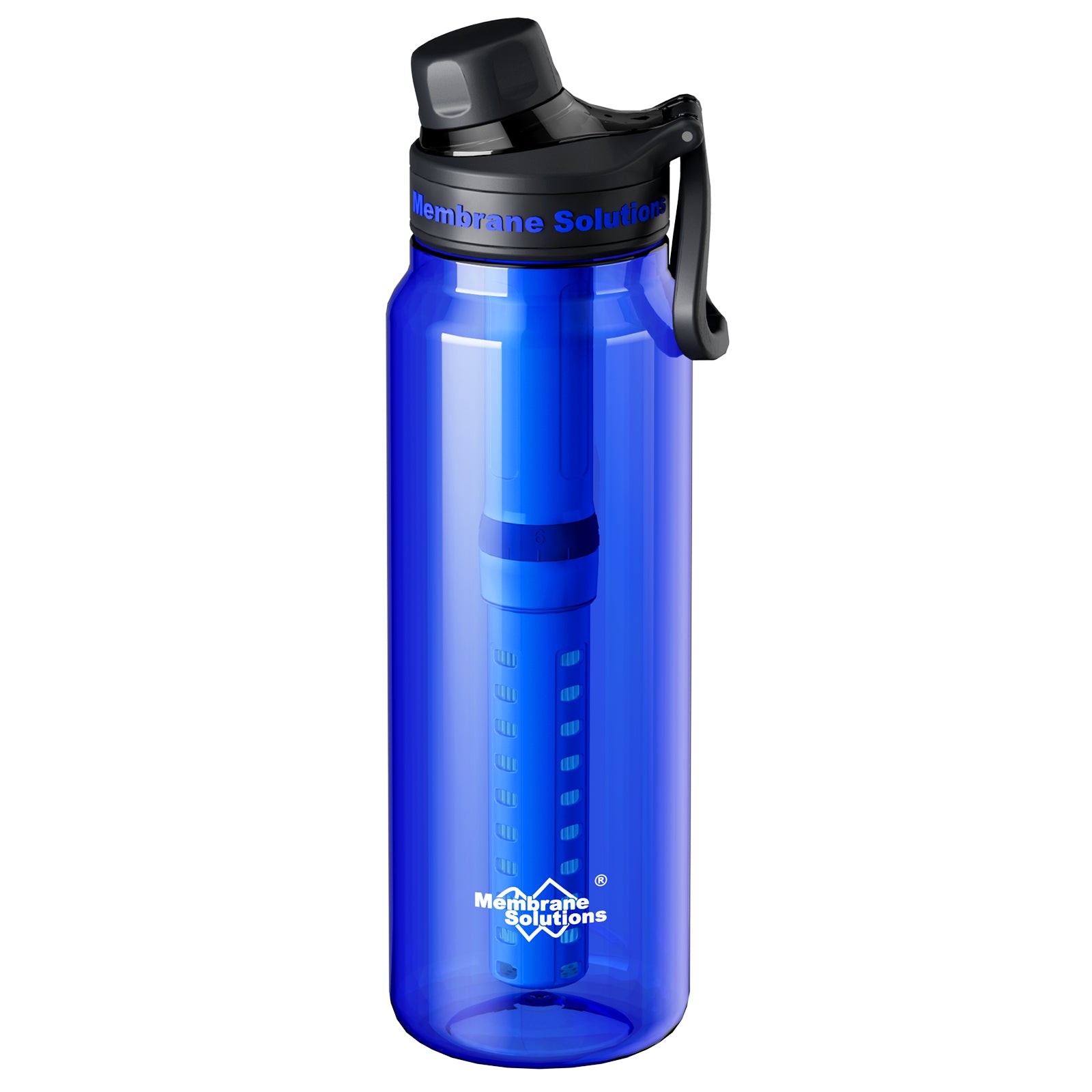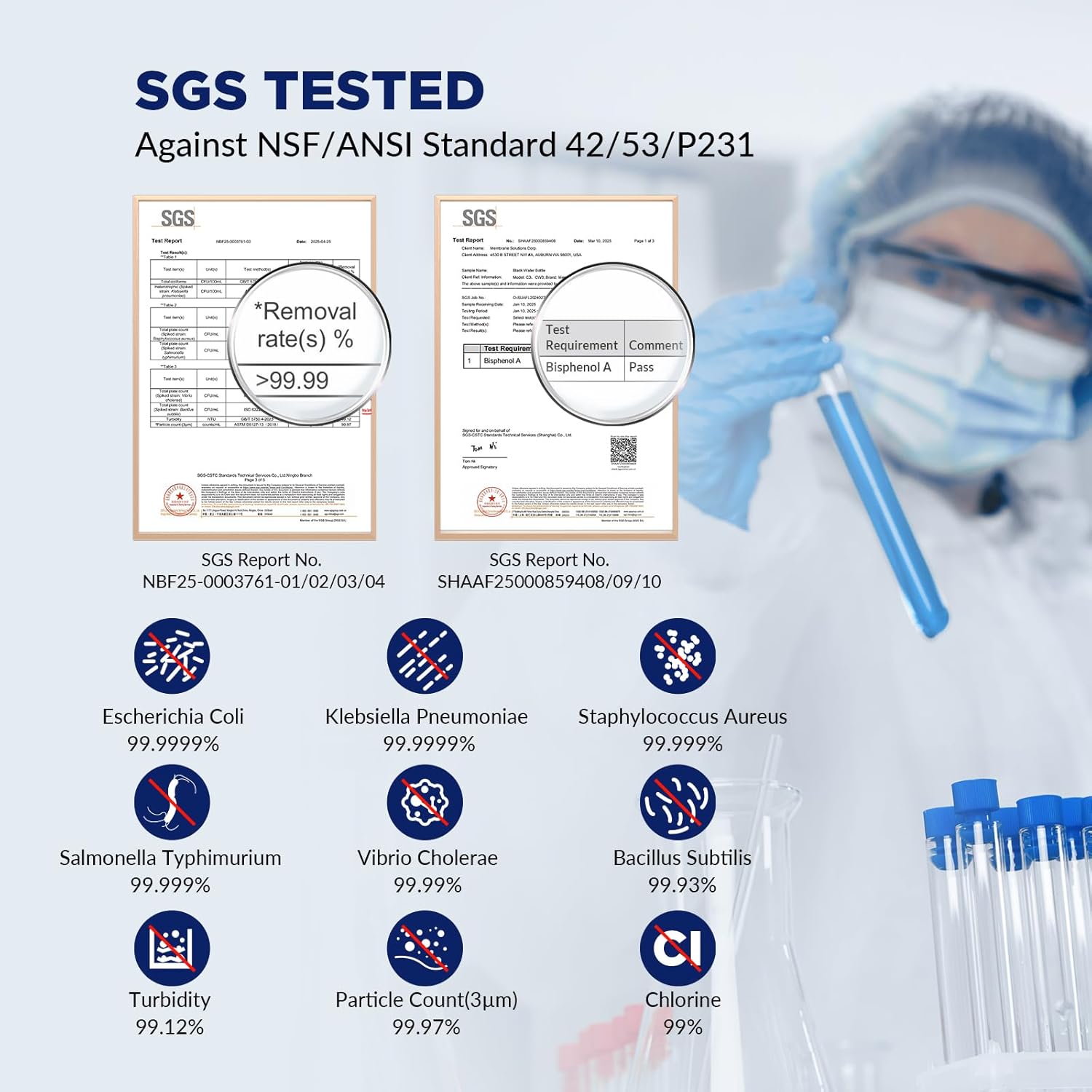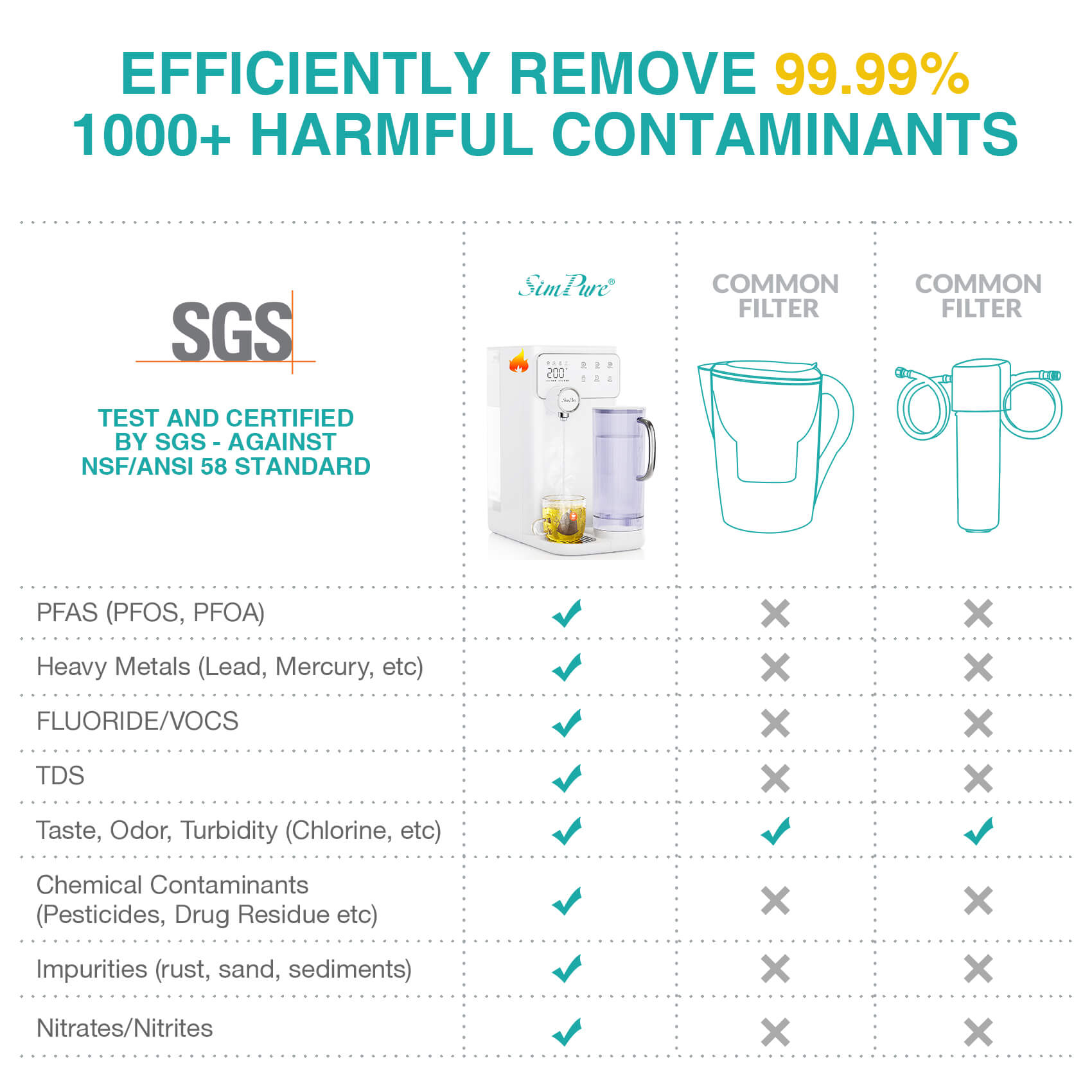If you are wondering why does reverse osmosis waste water,you will read the most useful information in the next few minutes. Reverse osmosis system purification accuracy is the highest among all water purifiers. The water filtered by a reverse osmosis system It can be consumed directly, and it is also a very good choice for soup, porridge, tea, milk, etc., so it is favored by many families. When people are buying a reverse osmosis system, they must know that a reverse osmosis water purifier will produce waste water. But why does reverse osmosis water purifier waste water? Is waste water dirty? Can this waste water be used? Let us explore!
2 Main Reasons Why Does Reverse Osmosis Waste Water
1. Due to Working Principle of Reverse Osmosis Membrane
In fact, the wastewater mentioned is a kind of concentrated water, which is the concentrated water formed in the purification process. After filtering, the salt content and some impurities in it are more than that of tap water, and many indicators fail to reach the health index, so it is called waste water.
The reverse osmosis water purifier will definitely produce waste water. It is nothing more than a problem of more or less discharge. The main reason is that there is a reverse osmosis working membrane. The working process of the reverse osmosis membrane is actually a liquid concentration process, which means it It can concentrate water, and when tap water enters the water purifier, salt and other components increase as the water flows through the surface of the reverse osmosis membrane. When the pressure is increased to a certain pressure and the pressure of the booster pump is reached, waste water will be generated after the water cannot pass through the reverse osmosis membrane. There is always a part of water mixed with impurities that cannot pass through the reverse osmosis membrane, so this part of water is also called concentrated water, which is what we often call wastewater.
2. Extend the Service Life of the Reverse Osmosis Filter Element
The reason why the reverse osmosis water purifier produces waste water is to extend the service life of the reverse osmosis membrane filter element. Users who buy filter elements know that the service life of reverse osmosis membrane filter elements is 2-3 years, which is longer than other filter elements, and the purchase cost is more expensive than other filter elements. In order to prolong the service life of the reverse osmosis membrane filter element, some trapped minerals (such as calcium carbonate, calcium sulfate, silicon) will precipitate on the surface of the reverse osmosis membrane and block the reverse osmosis due to the continuous increase in the concentration of impurities in the water during the purification process. The pores of the membrane make the water production of the reverse osmosis water purifier slow or not produce water. In order to prevent the filter element from being blocked by impurities in the water during use, the machine will automatically flush the filter element. This part of the water that rinses the filter element will also change. The waste water is discharged. For this reason, waste water with high salt content is produced and discharged from the waste water pipe. Just like people can’t hold back urine for a long time, it’s harmful to humans if they don’t excrete harmful substances.
What to Do RO Waste Water?

You may wonder what can i do with ro waste water? In fact, the waste water produced by the ro system is very small. Many high-quality ro water purifiers have relatively low waste water. A cup of purified water is only half a cup or a third of a cup of waste water. Although the waste water is low, it is really a pity to let it go directly. After all, this waste water is also filtered through the first three stages, but the content of salty heavy metal ions in the water will be higher. Most of the other indicators, such as turbidity, organic matter, Chroma, colloids, etc. are all lower than tap water.
So we can use this waste water for watering flowers, or for mopping the floor, cleaning toilets, etc., including washing clothes, so that the water can be effectively used without too much waste. If the kitchen is next to the sanitary wall, you can make a hole in the hidden wall, introduce the ro waste water pipe of the water purifier into the bucket of the bathroom, and store it to flush the toilet, wash the mop, and mop the floor. If the bathroom and the kitchen are far apart, the waste pipe can be spread out into the water storage bucket in the kitchen during installation. Here you can also read our related blog: Is RO waste water good for plants?

In conclusion, we should consider the proportion of wastewater when choosing a reverse osmosis water purifier. Although wastewater can be recycled, it is more troublesome. When choosing a water purifier, you will always see the wastewater ratio marked by the merchant, which is common in the past. The ratio is 1:3. With the advancement of technology, the wastewater ratio of many water purifiers has become 1:1, but the wastewater still exists. Therefore, we still choose a RO system with a small wastewater ratio. This is not only convenient for us to drink water, but also reduce some troubles. So our SimPure Y7P is much recommended for your trying! SimPure Y7P is the highest Water Utilization Rate of RO System in the Market now.
Click the picture below to get the detailed info about SimPure Y7P!




